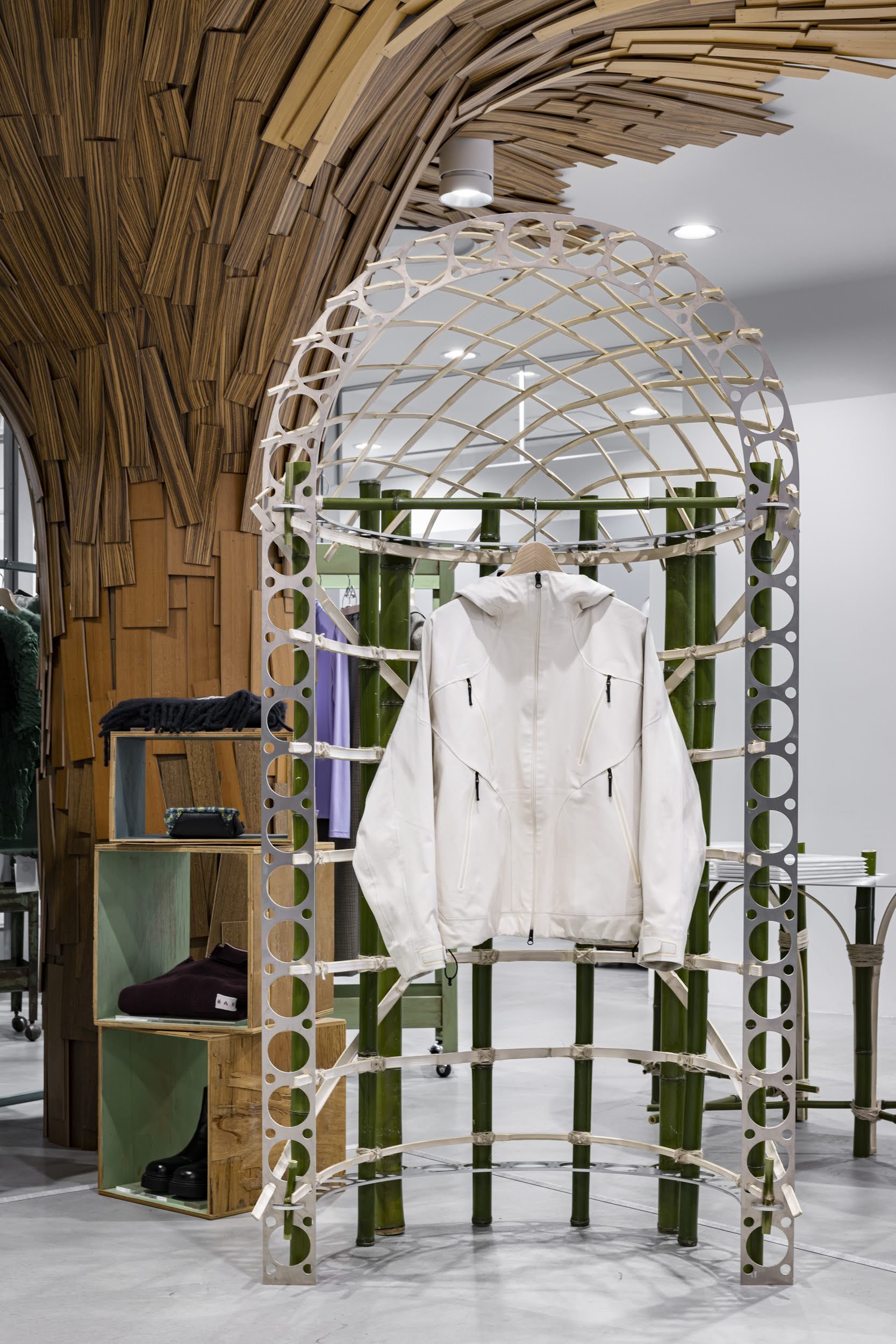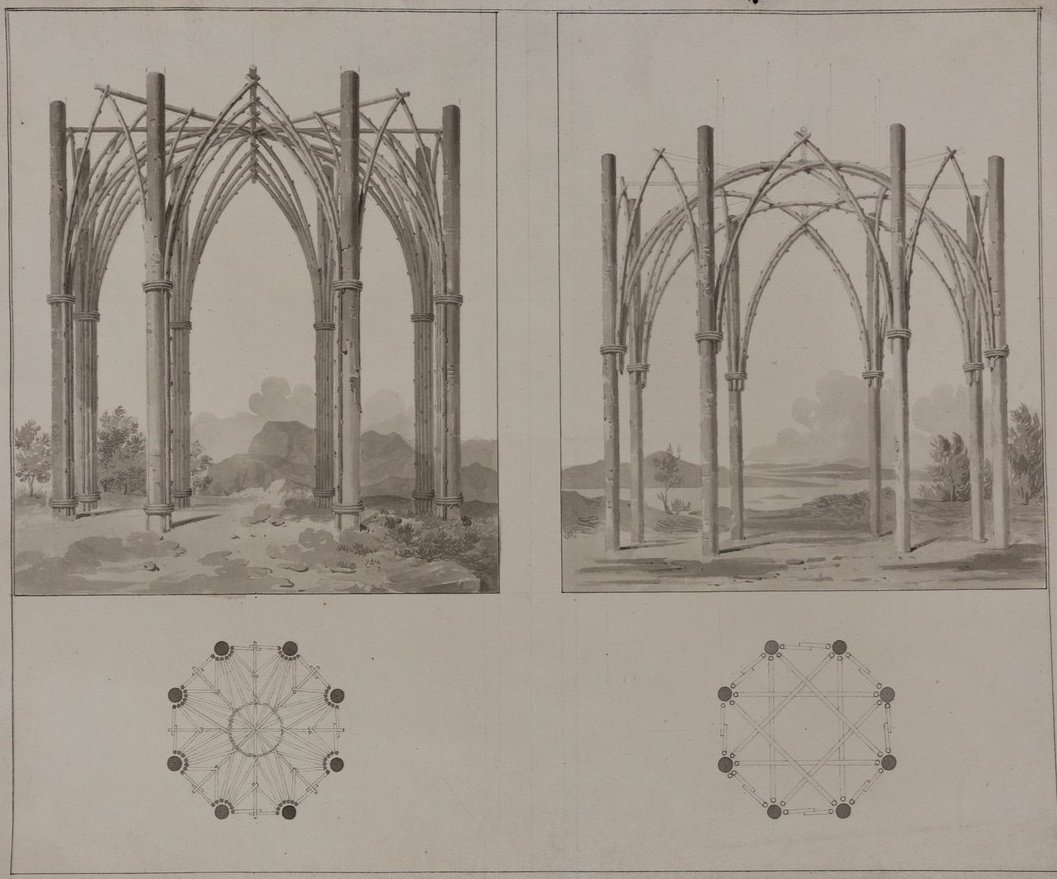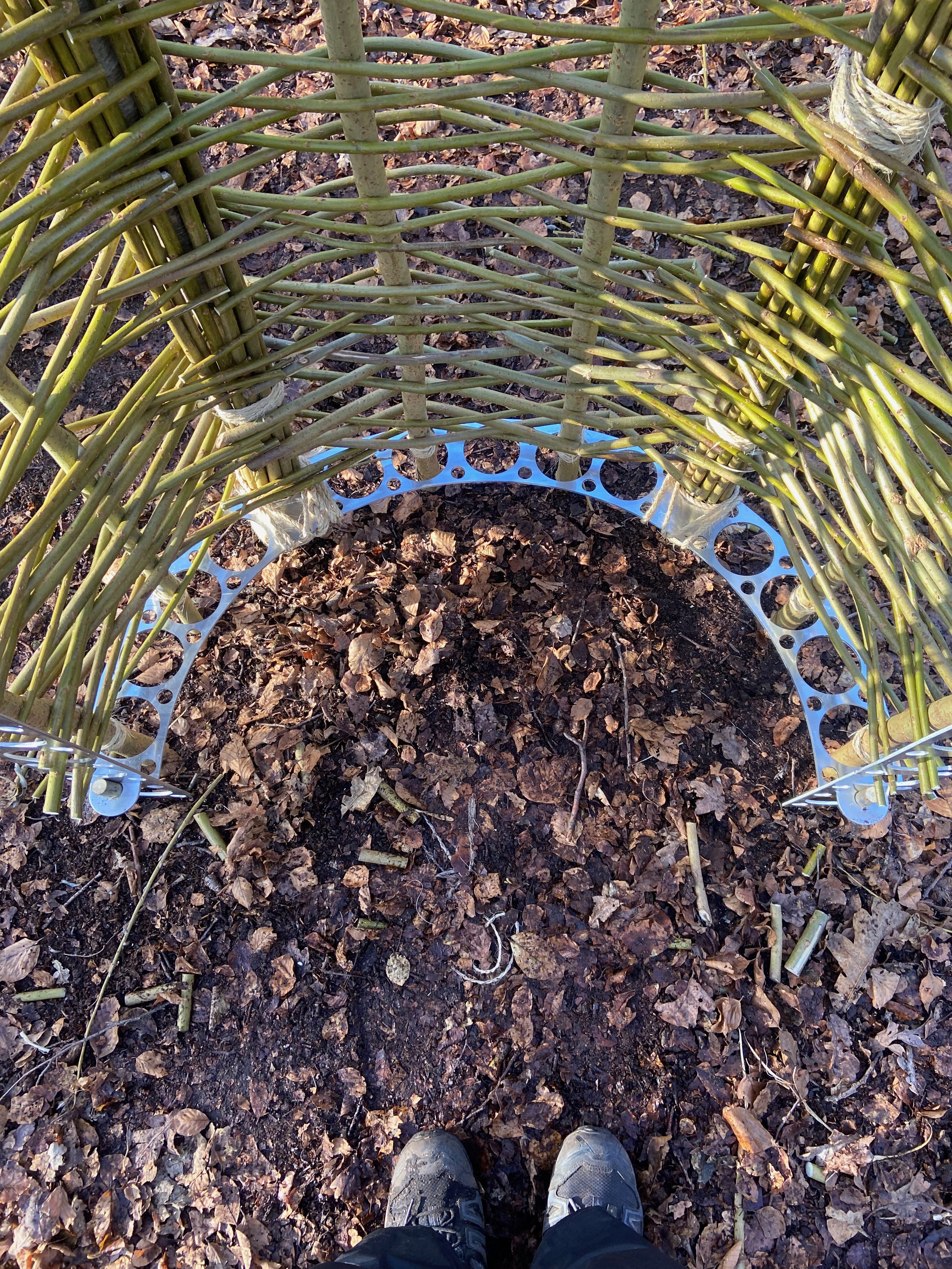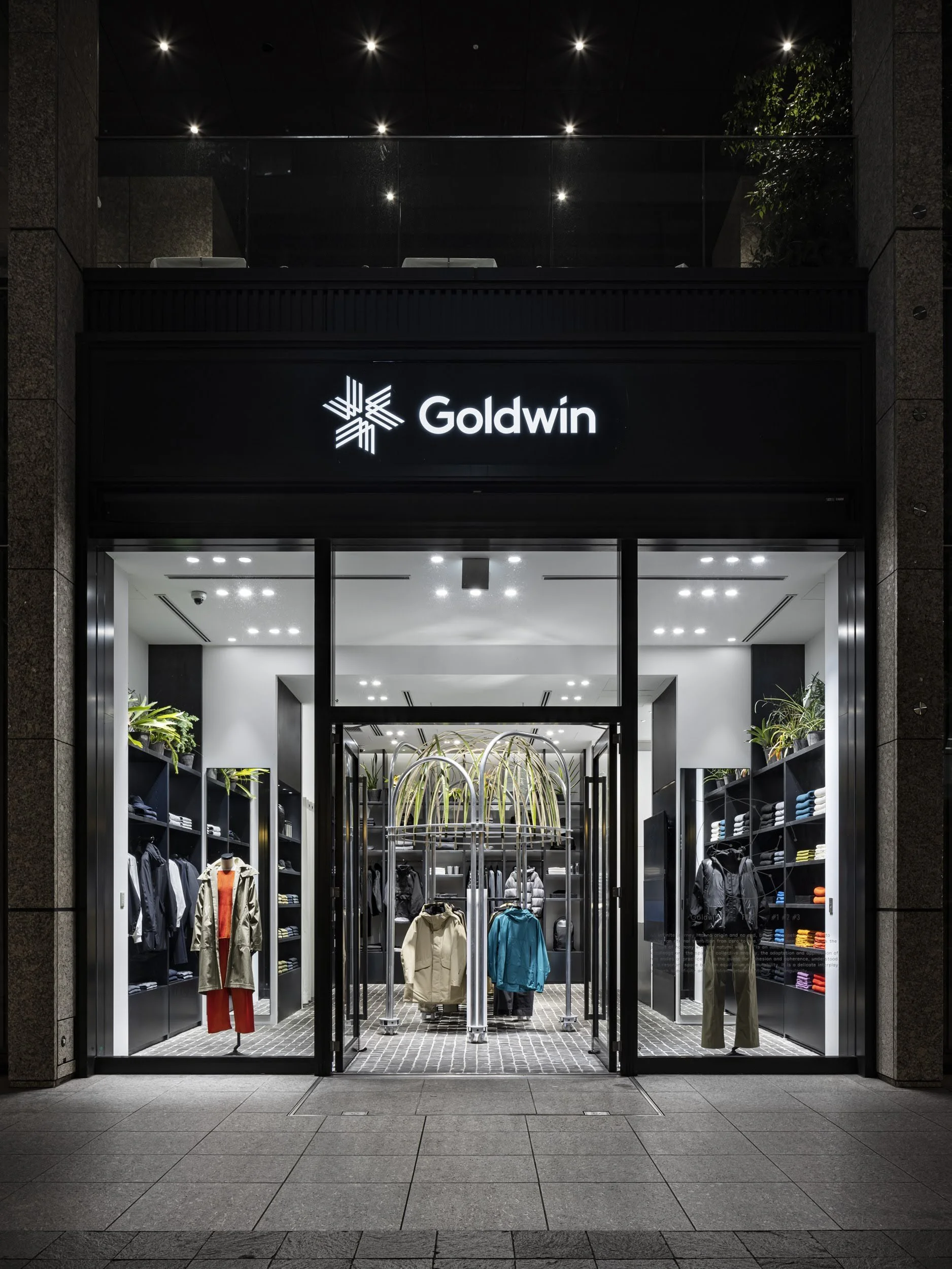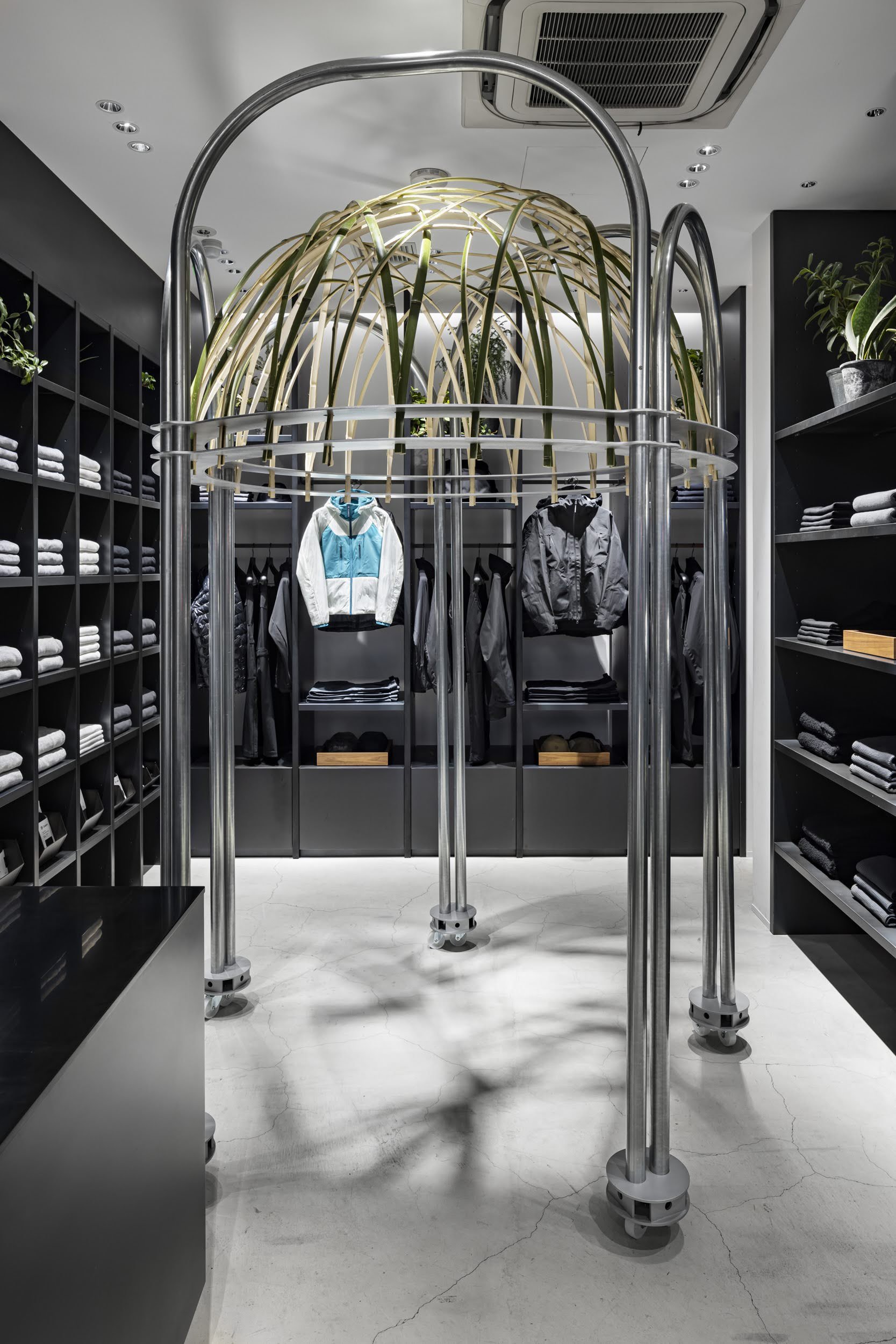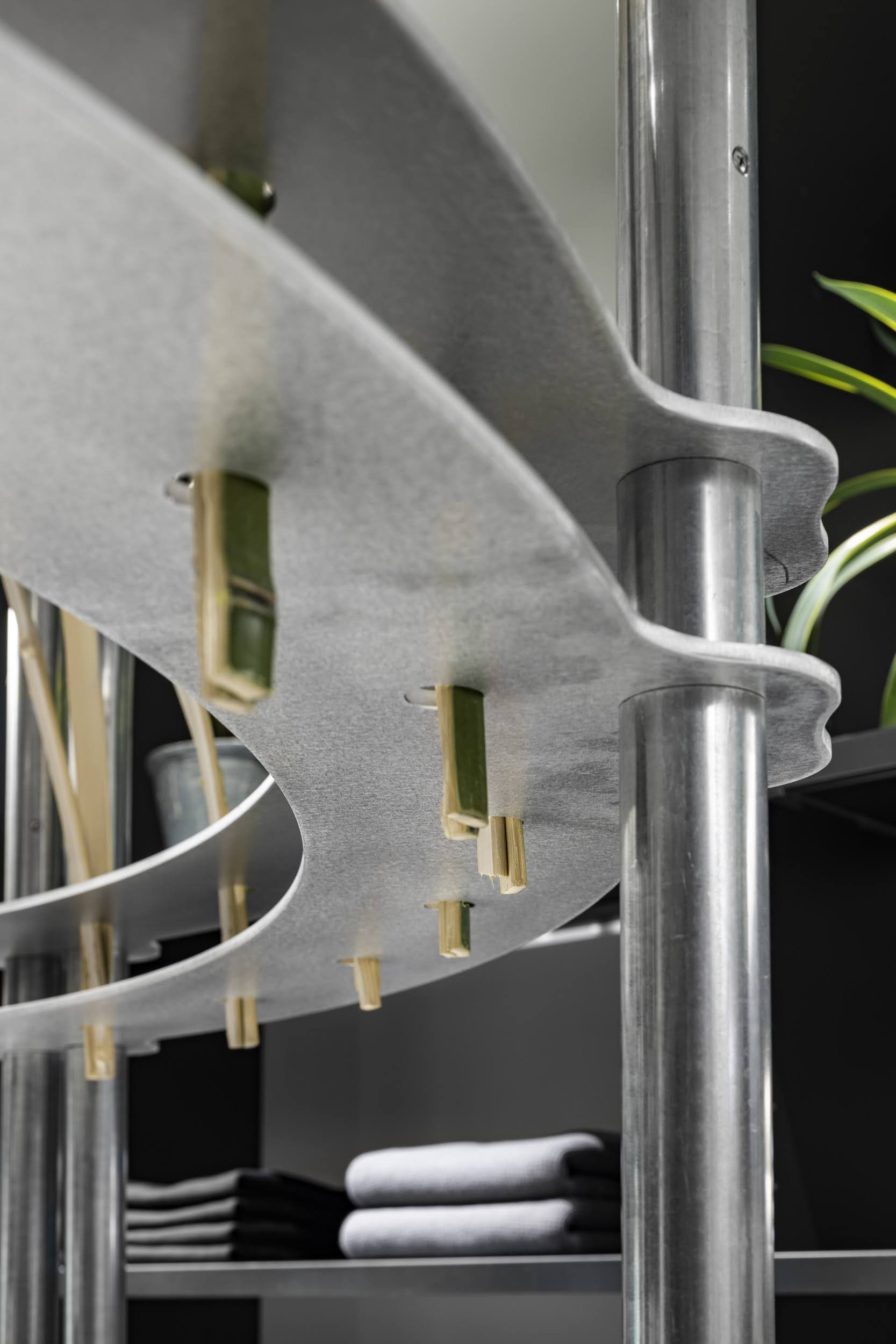Goldwin is located in Toyama prefecture in Japan. The area is well known for its snowy mountainous region. The brand started its history in 1950 from a small knit fabric factory and established a sporting goods Goldwin production in 1958. Since then the brand has managed combining traditional knit designs and the latest technology to create smart and luxurious sports wears and goods.
Dover Street Market Ginza, Tokyo Japan
The commission included research and development towards defining an architectural language for the Goldwin 0 project, that enquires into the primary relationship between nature and science. The focus was on developing a library of natural materials and traditional crafts and building technologies, that will inform the development of a wide range of structures of varying scale, from stage sets, pavilions, display structures and furniture.
We wanted to create a spatial design language which clearly speaks about the brand concept in its form and shape, using natural materials harvested from the local environment where the stores will be located. We wanted the language to be consistent yet flexible and adaptable, depending on the locations, sizes, and seasons where the stores will be constructed and installed.
The main design approach is to generate various forms derived from a circle geometry, which can be adapted to the unique situation of each store location and context.
Circle is a primary form and represents the idea of enclosure. 17th century Baroque Architecture utilises the primary geometry and composes it to create highly complex spatial arrangements.
The design of the structure employs the traditional construction methods typical to the locations/venues where Goldwin 0 will be displayed. It combines the digitally fabricated aluminium components produced off site, with the natural materials foraged from the local landscape/environment.
Inspired by Edward Blore’s plate illustrations for James Hall’s Essay on the Origin, History and Principles of Gothic Architecture 1809, our proposal is to transform the Italian baroque architecture into natural and organic materials. Using natural bend of freshly coppiced hazel, willow, or bamboo to form columns, arches and domes of the spatial enclosures.
The freshly cut material is very flexible and can be bent easily to desired shapes. The connections can be made using natural rope, by bundling and tying together to form structural columns or arches - the most primitive method of construction.
In order to frame organic materials in a precise manner, we mixed with prefabricated components using laser cut aluminium plates. Digital production of laser cut introduces accuracy and precision of this material vs. the organic nature of raw materials, creating a template, modularity, or a tool as a remnant for making, bridging primitive methods of construction with industrial technology led methods of production.
All the materials are recyclable, and the design strikes the aesthetic balance between rustic and industrial. The degree of density, transparency, solidness, and lightness will be controlled and adjusted depending on the context and requirements of each unique situation.
Goldwin Marunouchi, Tokyo Japan
Goldwin Harajuku, Tokyo Japan
The scale and proportion of original baroque church is manipulated and transformed to suit to various uses and applications. The structure acts as a backdrop to display the merchandises beautifully and interact with people, whilst transcending the strong message on ecology, sustainability, and culture.
Tokyo photos by Akira Arai
Team
Architectural design: Hayatsu Architects (Takeshi Hayatsu, Serina Harb)
Creative direction: OK-RM
Film and photography: Daniel Shea
Music: Mansur Brown
Choreography: Darcy Wallace
Fabrication: Very Very Far Away
back to PROJECTS

